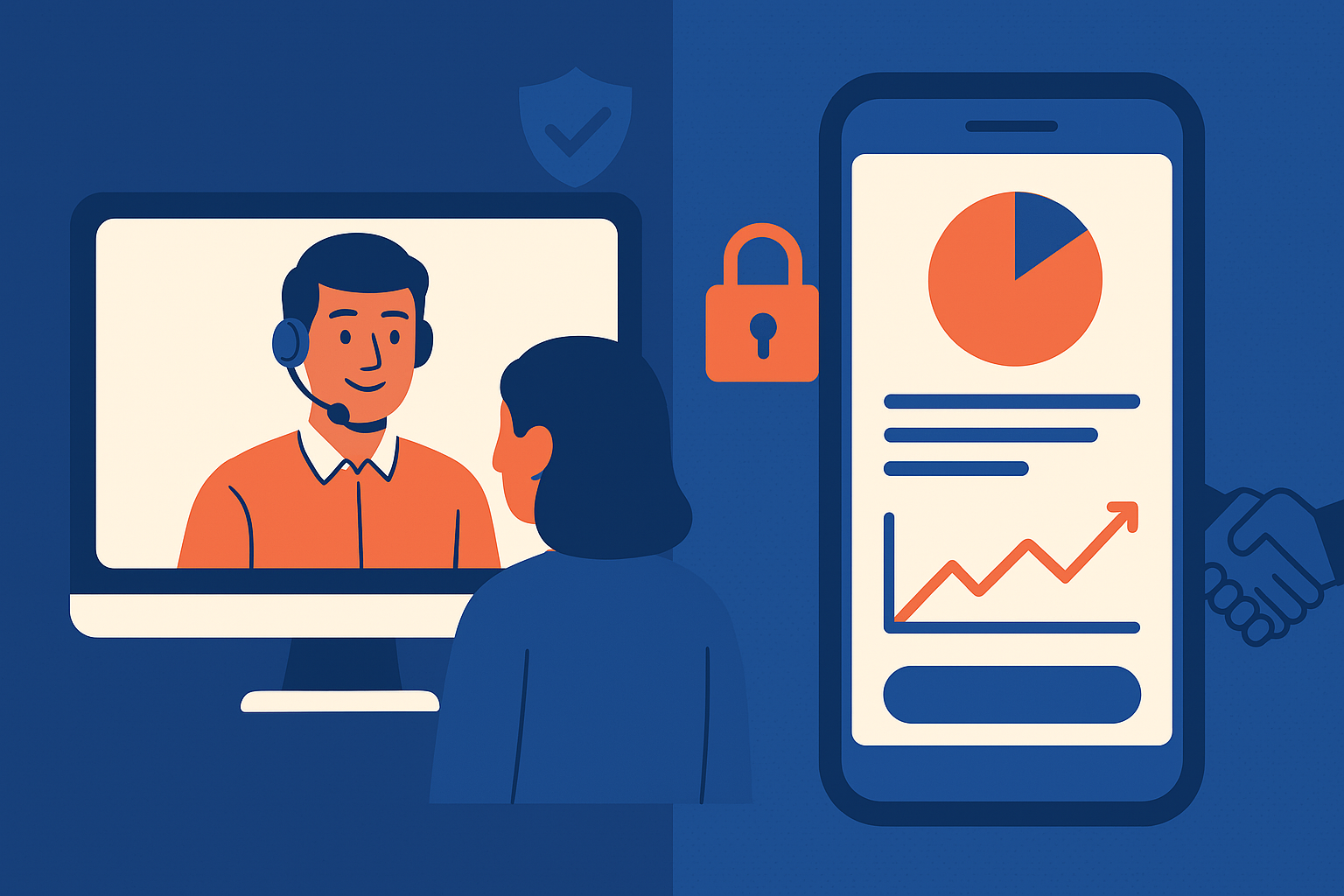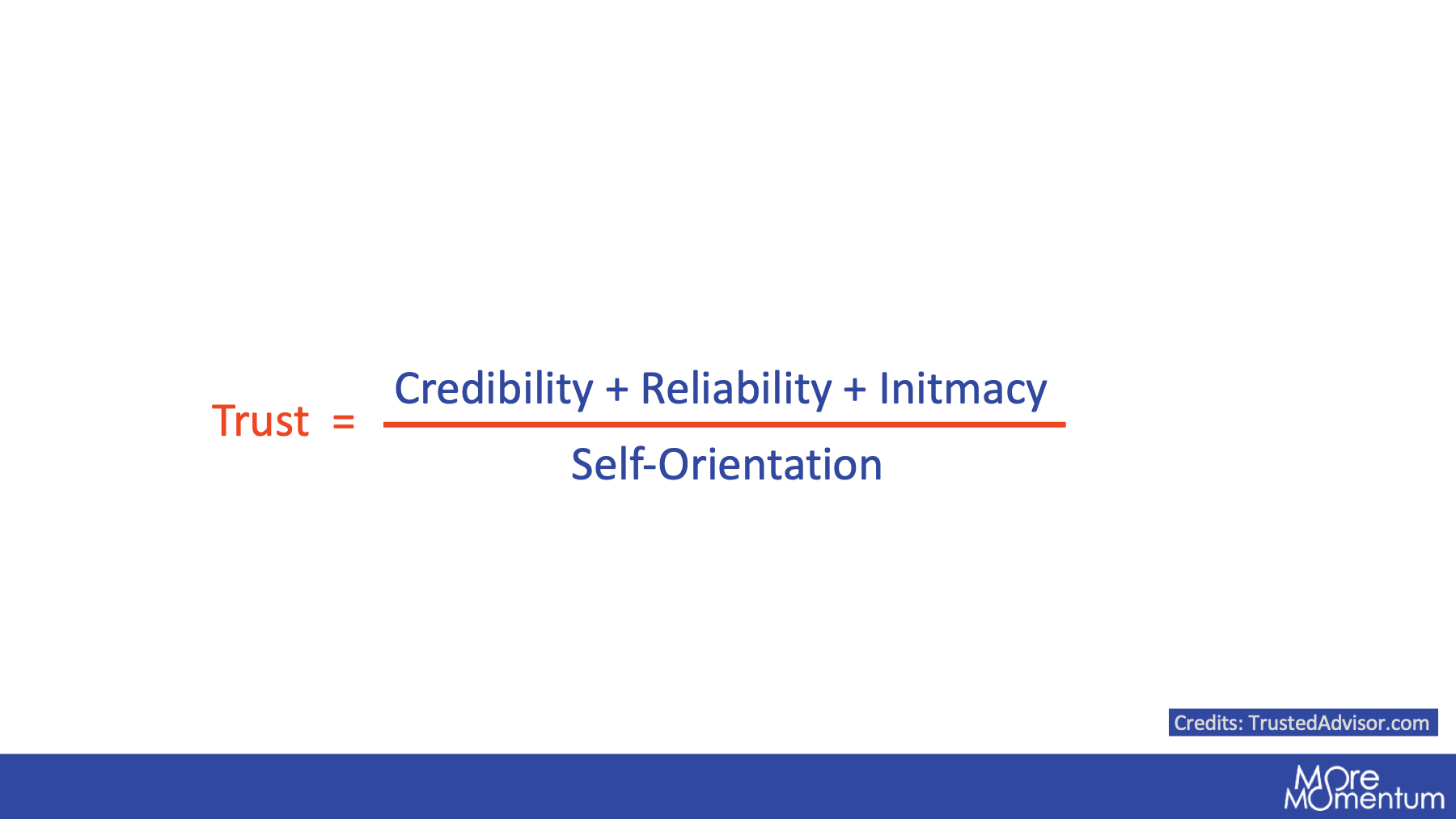Digital Services Need a New Trust Approach
Trust-building in digital services is no longer what it once was. Manufacturers require a new approach to remain competitive and maintain strong...

As service delivery shifts to digital and remote channels, building and maintaining customer trust has never been more crucial. While remote interactions bring scalability and efficiency, they also introduce new challenges—especially when it comes to establishing credibility and fostering long-term loyalty. In this article, we explore the three pillars of trustworthiness in remote services: human interactions, digital interfaces, and data security. By integrating transparency, empathy, and control into your service model, you can turn these challenges into opportunities, creating stronger and more reliable customer relationships in the digital-first world.
More and more service interactions now take place through digital and remote channels — via portals, apps, emails, video calls, chat, and automated systems. This shift brings clear benefits: better scalability, higher efficiency, and 24/7 availability.
But it also changes how service teams connect with their customers. In this new environment, the absence of physical presence creates distance — not just in space, but also in how customers experience the service and the people behind it.
Service teams and customers are navigating a different landscape:
As a result, many service leaders see a growing challenge: How do we build and maintain trust when so much of our service is digital, remote, and automated?
The good news is that trust can still be built — and even strengthened — in this new environment. When remote services are designed with transparency, empathy, and control in mind, they can create consistent and reliable experiences that customers trust.
This article explores three key areas where trust is built in digital and remote service:
Trust is no longer just about personal relationships. It's about how customers experience your service — every message, every screen, every promise. And that experience is now digital by default.
Much of today’s service delivery happens through screens. Video meetings, emails, live chats, and voice calls have replaced the face-to-face interactions that once shaped customer relationships. These channels are fast, flexible, and often more convenient — but they also introduce new barriers when it comes to building trust.
Without the informal cues of in-person interaction — a firm handshake, a reassuring nod, a quick side conversation — it becomes harder to read tone, signal intent, or build rapport. Communication is often delayed or fragmented. Messages arrive at different times and in different formats, making it difficult to maintain flow and shared understanding.
This shift changes how customers experience your service teams. It puts more pressure on every interaction to be clear, human, and intentional.
Trust begins to erode when digital communication feels impersonal or vague. Generic responses that ignore the customer's context can seem dismissive or robotic. A missed follow-up, even unintentional, can leave the impression that the service team doesn’t care. And when answers are unclear — or when service teams appear defensive — customers may start to feel they’re not being told the whole story.
In remote settings, even small signals matter. A short delay in responding can feel longer. A neutral message can be read as cold. A scripted reply can feel like a brush-off.
Remote communication doesn’t have to be distant. With the right mindset and practices, service teams can build real connection — even without being in the same room.
Use the information you already have to make your messages feel relevant and specific. Referencing past interactions, customer goals, or current service activity helps show that you understand their world — and that they’re not just another ticket in the queue.
Avoid overly formal or technical language. Simple expressions of empathy — such as acknowledging a delay or frustration — help customers feel heard. Tone matters more when body language is absent.
Where possible, bring interactions to life with screen sharing, diagrams, or co-browsing tools. A short video call or annotated screen can create shared understanding faster than a long email thread.
Trying to appear overly confident can backfire. Customers trust professionals who are honest, even when the answer is “I’m not sure, but I’ll find out.” It signals credibility, not weakness.
Follow-through builds trust. If you promise an update by Thursday, deliver it — even if there’s nothing new to report. Reliability over time becomes a powerful trust signal.
Remote service interactions are not just about solving problems quickly. They are moments that shape how customers perceive your people, your culture, and your reliability. When service teams show up as human, responsive, and consistent — even behind a screen — they lay the foundation for lasting trust.
Behind every remote service experience is a digital interface — a portal, an app, a dashboard, or an automated update. These tools are central to how customers interact with your services, track progress, and measure value. When designed well, they create clarity, control, and confidence. When designed poorly, they raise doubts and frustrations.
The challenge is simple but significant: customers don’t see the people doing the work. They rely entirely on what the system shows — or fails to show — to understand what’s happening. This creates a new kind of trust gap.
Even when service teams are performing well behind the scenes, the customer may feel left in the dark. If updates are unclear, if performance is hard to assess, or if the interface is clunky or confusing, customers may start to question the service itself.
Digital interfaces lose trust when they feel incomplete, confusing, or impersonal. A dashboard that shows little progress. An automated email with no explanation. A portal that doesn’t reflect recent activity. All these experiences can leave customers wondering: Is anything actually happening? Are they really on top of it?
Even small glitches — a broken link, a mislabelled tab, or inconsistent data — can make systems feel unreliable. Automation, when too cold or too invisible, can come across as careless rather than efficient.
Digital tools are not just channels for delivering information — they’re opportunities to demonstrate transparency, competence, and care. When customers can see what’s going on, understand what it means, and feel in control, trust grows.
Use service logs, real-time updates, and technician tracking to show progress. A simple note like “awaiting part delivery” or “technician en route” reassures the customer that things are moving.
Move beyond listing completed actions. Help customers understand what impact those actions had. Instead of “conducted system check,” say “confirmed system running at 98% efficiency — no action required.” The more clearly you link service activity to outcomes, the more valuable and trustworthy it feels.
Display key metrics — uptime, incident response times, cost savings, or sustainability goals — in a way that aligns with your customer’s priorities. Customisable views can help different roles see the data that’s most relevant to them.
Empower customers to update preferences, check status, or download reports without needing to wait. But also make sure there’s a visible and easy way to reach a real person when needed. This balance creates both efficiency and reassurance.
When digital service interfaces are clear, responsive, and meaningful, they do more than deliver information — they reinforce your reliability. Customers feel that you are open, organised, and focused on their success. And that kind of trust doesn’t depend on being in the same room. It depends on being consistently present — in ways the customer can see and understand.
Trust isn’t just about performance and communication — it’s also about safety. In remote and digital service models, customer data is at the heart of every interaction. How you collect, use, protect, and share that data plays a direct role in how trustworthy your organisation appears.
When customers hand over their data — from system usage logs to personal contact details — they expect it to be handled responsibly. They also want to know that they remain in control.
The problem is: many customers don’t feel fully informed or empowered. They may not know what data you’re collecting, how it’s being used, or whether it’s being shared with others. If anything goes wrong, the damage to trust can be immediate and lasting.
Trust erodes when data handling feels vague or secretive. If customers can’t see what information is being stored, or why, they may assume the worst. Unclear privacy terms or generic legal language can add to this uncertainty.
Even well-intentioned data practices can lead to concern if they’re not communicated clearly. Worse, a security breach — especially if not handled with openness — can undermine years of trust-building in a single moment.
Earning trust with data means giving customers clarity, control, and reassurance. The more transparent and customer-centric your approach, the safer and more respected they feel.
Let customers know what data you collect, how it’s used, and how it helps them. Go beyond legal compliance — aim for clear, human language that builds understanding.
Make it easy for customers to view, download, update, or delete their data. This reinforces a sense of control and shows you have nothing to hide.
Allow customers to choose what they share, how it’s used, and who can access it. For example, give them options for opting into performance monitoring or third-party sharing.
Don’t wait until something goes wrong. Be proactive in explaining how you protect data — from encryption and authentication to internal policies and training. Let customers know what you’re doing behind the scenes.
Show that your practices meet established benchmarks such as ISO 27001 or GDPR. Certification builds credibility and gives customers external proof that you take data seriously.
In the digital service economy, data is a shared asset — and trust is built on how openly and securely you handle it. By putting customers in the driver’s seat and showing your commitment to transparency and security, you don’t just comply with the rules — you build lasting confidence.
Remote and digital services may start with a trust deficit — no face-to-face contact, limited visibility, and less room for informal human connection. But that doesn’t mean they’re at a disadvantage.
In fact, when designed with care, digital service models can become more trustworthy than traditional ones. Why? Because they can be more consistent, more transparent, and more scalable.
Customers value clarity, control, and reliability. Digital tools make it possible to deliver on these values systematically — not just through personal relationships, but through every touchpoint and interaction.
The key is to embed trust-building into both your digital service design and your team’s daily behaviour. That means:
Done well, remote service doesn’t feel remote — it feels responsive, reliable, and respectful.
Trust, then, is no longer left to chance. It becomes a core capability — designed into the way your organisation works, scales, and grows.
Trust in remote and digital services is not just a nice-to-have — it’s essential. As service delivery continues to evolve, the most successful organizations will be those that embed trust into every interaction, whether human or digital. It’s no longer enough to offer a product or service — customers need to feel seen, informed, safe, and in control at every step.
Ask yourself: Do your customers feel secure in their interactions with your digital systems? Do they trust the transparency of your processes, the security of their data, and the consistency of your communication? These are the fundamental questions that will define your success in the digital-first era.
Take the time to assess how these principles of transparency, empathy, and control are incorporated into your existing practices, mindset, and innovation portfolio. Are your teams equipped to build trust in every customer interaction? Are your systems designed to reassure customers and promote confidence? By aligning your service models with these principles, you’ll not only address current challenges but also set a new standard for trust in the digital service landscape.
For further insights on building trust, explore our article on the Trust Equation.
At the Service Transformation Summit on Building Trusted Partnerships with Customers in a Digital and Remote Service Era, we will delve deeper into the evolving landscape of trust in remote and digital service delivery.
Our discussions will focus on the key challenges and opportunities facing service teams as they navigate this new digital-first world. Key topics will include:
The summit will offer practical insights, real-world examples, and a platform for sharing experiences with peers facing similar challenges. It's a unique opportunity to transform these challenges into opportunities for building lasting customer trust.
Join us at this Summit to discover how to shape your organisation’s trust strategy and build enduring relationships with your customers in an increasingly digital world.
Check out the upcoming Service Transformation Summits:
Subscribe for the our Impulse Letter
With regular updates about service news, trends and best practices.

Trust-building in digital services is no longer what it once was. Manufacturers require a new approach to remain competitive and maintain strong...

Navigating the evolution of data-driven services requires understanding key patterns and embracing innovation. Learn about the journey from concept...

Navigating data-driven service transformation requires overcoming key challenges such as securing stakeholder buy-in, matching services with market...